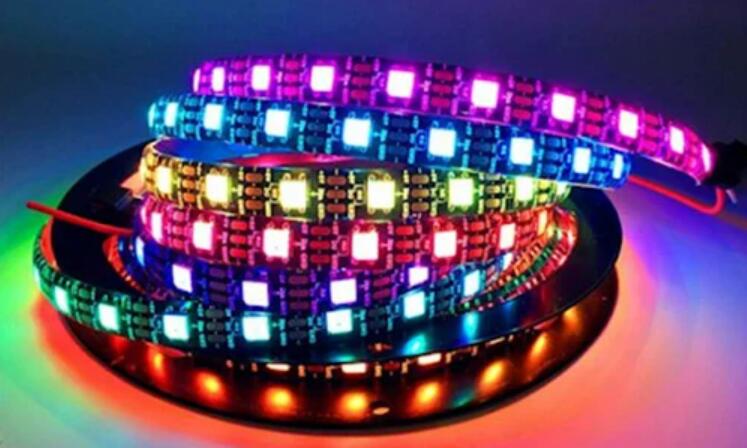Programmable LED strips, also known as addressable LED strips, are a type of LED lighting system that allows individual LEDs on the strip to be controlled independently. This means you can create dynamic lighting effects, patterns, and animations by programming the LEDs through software or hardware controllers. Here's some basic information about programmable LED strips:

1. WS2812B (or Neopixel): One of the most common types of programmable LED strips. Each LED on the strip has an integrated driver chip, allowing you to control them individually using a single data line. These are widely used due to their simplicity and compatibility with various microcontrollers.
2. APA102 (or Dotstar): Similar to WS2812B, APA102 LED strips also allow individual LED control, but they use a two-wire SPI interface for communication. They tend to have higher refresh rates and are less prone to timing issues compared to WS2812B strips.
3. SK6812: Another alternative to WS2812B strips, SK6812 LED strips are compatible with Neopixel libraries and offer similar functionality.
4. Programming: Programmable LED strips are typically programmed using microcontrollers such as Arduino, Raspberry Pi, or dedicated LED controllers. You can use various programming languages such as C/C++, Python, or dedicated libraries to control the LEDs and create custom lighting effects.
5. Power Requirements: LED strips can consume significant power, especially when many LEDs are illuminated simultaneously or set to high brightness levels. Make sure to provide an adequate power supply to avoid voltage drop and ensure stable operation.
6. Applications: Programmable LED strips are used in various applications such as decorative lighting, ambient lighting, signage, art installations, stage lighting, and more. They provide flexibility and creativity in lighting design.
7. Safety Considerations: When working with LED strips, it's essential to consider safety precautions, especially concerning electrical wiring and power supplies. Make sure to use appropriate connectors, soldering techniques, and enclosures to prevent short circuits and electrical hazards.
8. Waterproofing: LED strips are available in waterproof and non-waterproof variants. If you plan to use them outdoors or in damp environments, make sure to choose waterproof strips and provide proper sealing to protect the electronics from moisture.
9. Pixel Density and Length: LED strips come in various pixel densities (number of LEDs per meter) and lengths. Choose the appropriate density and length based on your project requirements and desired level of detail in lighting effects.
10. Cost: The cost of programmable LED strips varies depending on factors such as brand, quality, pixel density, and length. Cheaper options may sacrifice quality and reliability, so it's essential to balance cost with performance and durability.
Overall, programmable LED strips offer endless possibilities for creative lighting projects, allowing you to bring your ideas to life with vibrant and dynamic illumination.


